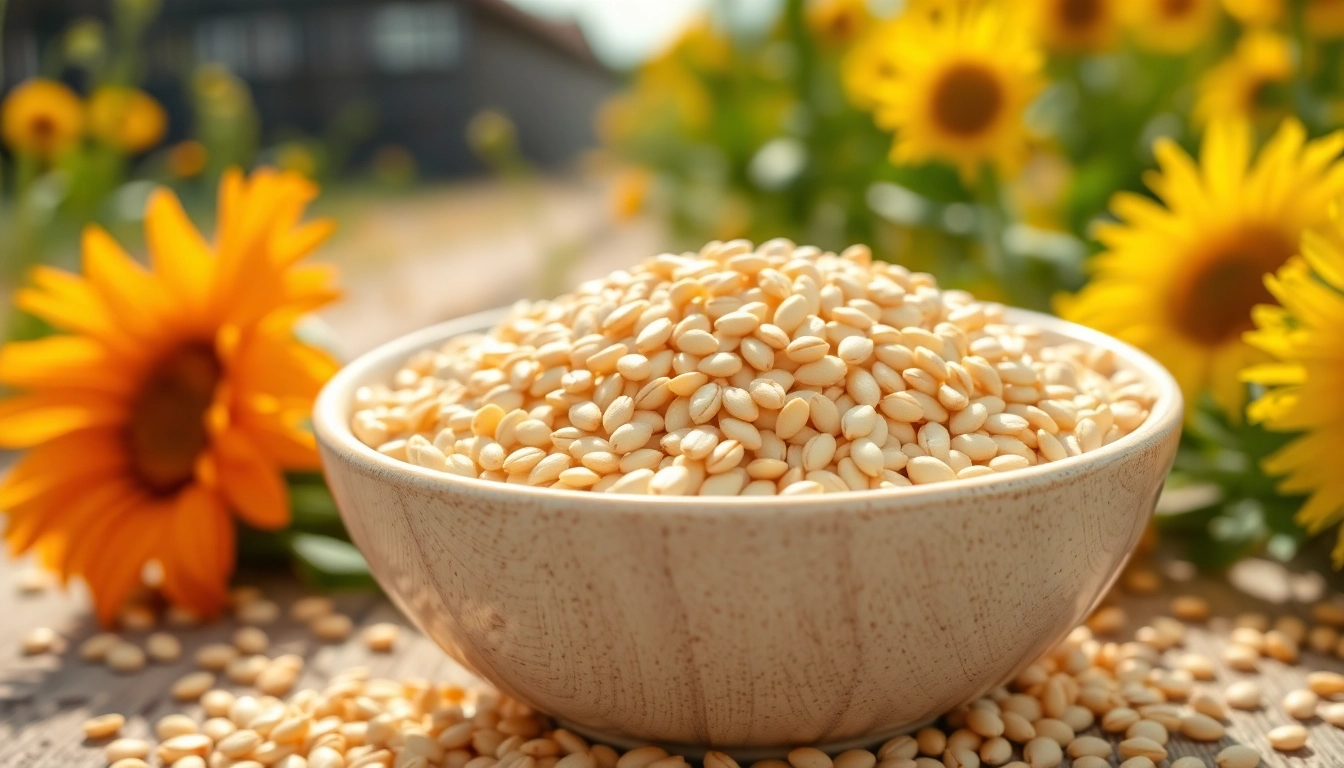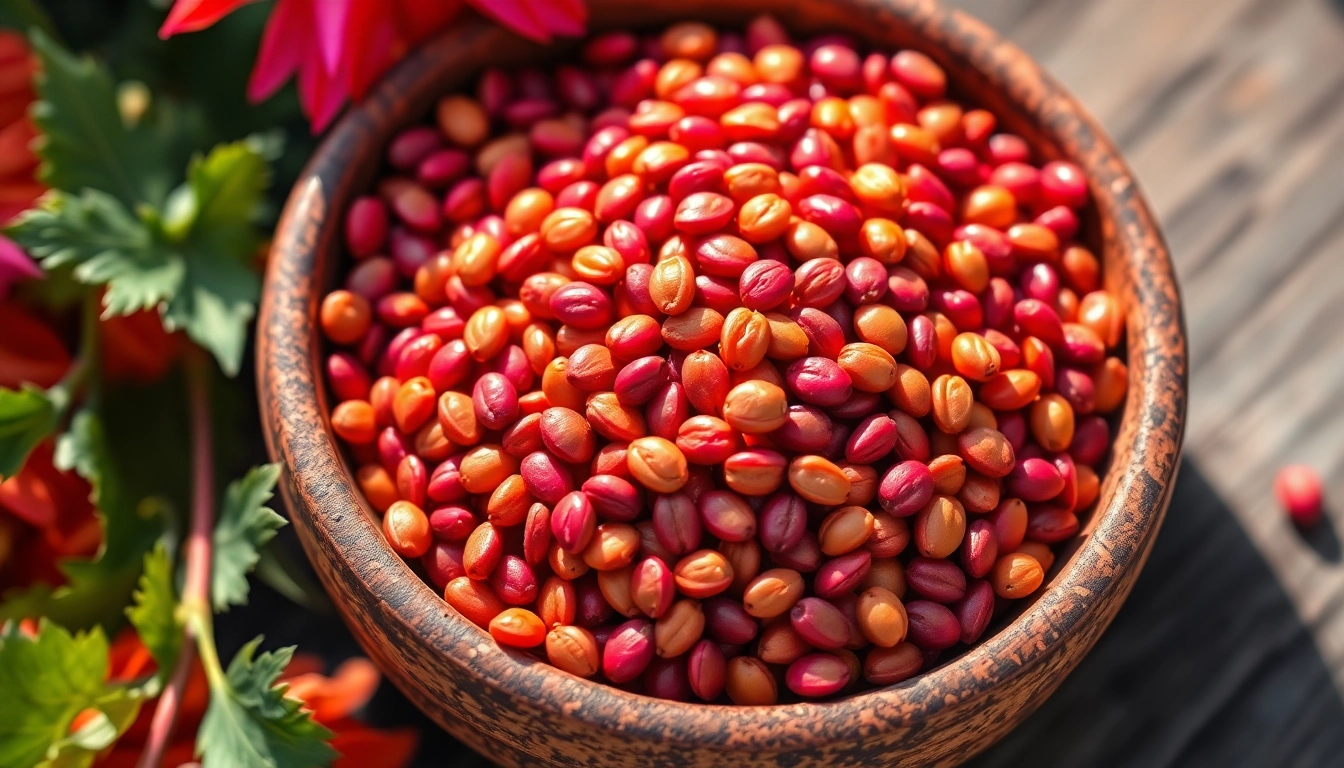Unlocking the Potential of Safflower Seeds: A Comprehensive Guide
In the dynamic world of health foods and superfoods, Safflower Seeds have gained significant recognition for their remarkable nutritional profile and versatile culinary applications. These seeds, derived from the safflower plant (Carthamus tinctorius), are not only valued for their health benefits but also for their role in enriching global food markets. As a leading manufacturer and exporter of authentic food products, Spice Nest takes pride in offering premium safflower seeds that meet international quality standards, certified and trusted by a broad client base worldwide. In this comprehensive guide, we will explore the origins, nutritional benefits, integration methods, and market outlook of safflower seeds, providing valuable insights for consumers, health enthusiasts, and food industry professionals alike.
Understanding Safflower Seeds: Origins and Nutritional Profile
Historical Background and Cultivation Regions of Safflower
Safflower has a history that traces back thousands of years, originating from regions in the Middle East, North Africa, and parts of Asia. Historically cultivated for its vibrant blossoms used in dyes and traditional medicines, safflower seeds are now recognized for their oil-rich composition and dietary benefits. The primary cultivation regions include India, Iran, the United States, and several Mediterranean countries, where favorable climatic conditions foster optimum seed development. India, in particular, stands out as one of the largest producers, leveraging diverse agro-climatic zones and advanced agricultural practices to ensure high-quality yield.
Modern cultivation techniques focus on sustainable farming, organic practices, and genetic improvements to enhance seed yield and oil content. These practices support the production of premium safflower seeds that retain their nutritional qualities and culinary versatility. The seeds are harvested once mature, dehulled, and processed to maintain freshness and preserve their health benefits, all under stringent quality control measures aligned with international standards.
Core Nutrients and Health Benefits of Safflower Seeds
Safflower seeds are a powerhouse of nutrients, offering a rich blend of unsaturated fats, proteins, vitamins, and minerals. They are particularly renowned for their high content of linoleic acid, an essential omega-6 fatty acid that plays a crucial role in maintaining cell membrane integrity, skin health, and hormone synthesis. Additionally, safflower seeds contain oleic acid, which supports cardiovascular health.
Beyond healthy fats, these seeds are a good source of plant-based protein, fiber, vitamin E (a potent antioxidant), B-complex vitamins, magnesium, and iron. This nutrient profile contributes to various health benefits, including improved cardiovascular function, anti-inflammatory effects, and antioxidant protection against oxidative stress. Their low carbohydrate content makes them suitable for low-carb and ketogenic diets, further amplifying their appeal among health-conscious consumers.
Incorporating safflower seeds into your diet can support cholesterol management, bolster immune function, and contribute to overall metabolic health. Their rich nutrient composition also makes them ideal for creating functional foods and dietary supplements that promote vitality and well-being.
How Safflower Seeds Compare to Other Superfoods and Oils
Among the plethora of superfoods, safflower seeds stand out due to their balanced profile of healthy fats, low saturated fat, and high antioxidant content. Compared to other seed-based superfoods like flaxseeds or chia seeds, safflower seeds offer a higher concentration of linoleic acid, making them particularly beneficial for individuals seeking to optimize omega-6 fatty acid intake.
In terms of oils, safflower oil derived from these seeds is renowned for its high smoke point, neutral flavor, and healthful properties, positioning it as a versatile cooking oil suitable for frying, sautéing, and salad dressings. Its health benefits extend beyond basic nutrition, including anti-inflammatory properties and support for skin health. When compared to oils like soybean or sunflower, safflower oil often contains a higher proportion of monounsaturated fats, which are associated with reduced cardiovascular risks.
Integrating Safflower Seeds into Your Diet
Easy Recipes and Snack Ideas Using Safflower Seeds
Integrating safflower seeds into everyday meals is straightforward and offers a multitude of culinary possibilities. Here are some practical ideas:
- Nutritious Breakfast Bowls: Sprinkle toasted safflower seeds over oatmeal, yogurt, or smoothie bowls for added crunch and nutrient density.
- Homemade Trail Mix: Combine safflower seeds with nuts, dried fruits, and dark chocolate for a healthy snack on the go.
- Salad Toppings: Garnish fresh salads with a handful of raw or roasted safflower seeds to enhance texture and nutritional value.
- Energy Bars: Incorporate ground safflower seeds into homemade energy bar recipes for sustained energy release.
- Cooking Enhancements: Add safflower seeds to stir-fries, grain dishes, or bread doughs for subtle flavor and health benefits.
Roasting safflower seeds enhances their flavor and crunchiness, making them an even more appealing addition to various dishes.
Best Practices for Consumption and Serving Suggestions
To maximize health benefits, consider the following guidelines:
- Portion Control: Consume 1–2 tablespoons of safflower seeds per serving to balance calorie intake and nutrient absorption.
- Raw vs. Roasted: Raw seeds retain most nutrients, whereas lightly roasted seeds offer enhanced flavor; avoid excessive roasting to prevent nutrient degradation.
- Storage: Keep safflower seeds in airtight containers in a cool, dry place to prevent rancidity and maintain freshness.
- Pairings: Combine with other superfoods like chia seeds, flaxseeds, or nuts for a nutrient-dense snack or meal enhancer.
Combining Safflower Seeds with Other Healthy Ingredients
For a balanced and diverse diet, blend safflower seeds with ingredients like:
- Quinoa, oats, or whole grains
- Fresh fruits such as berries, slices of apple, or banana
- Leafy greens like spinach or kale for salads and smoothies
- Healthy oils such as extra virgin olive oil or coconut oil for cooking
This combination boosts the intake of antioxidants, essential fatty acids, fiber, and phytonutrients, supporting overall health and vitality.
Health Advantages of Safflower Seeds You Should Know
Cardiovascular Health and Cholesterol Management
Safflower seeds contribute significantly to heart health through their high content of unsaturated fats, particularly linoleic acid and oleic acid. These fats help lower bad LDL cholesterol levels while increasing HDL cholesterol, reducing the risk of arteriosclerosis and cardiovascular diseases. Multiple studies have demonstrated that regular consumption of safflower oil or seeds can improve lipid profiles, promote healthy blood circulation, and stabilize blood pressure.
Anti-inflammatory and Antioxidant Properties
The presence of vitamin E and other antioxidants in safflower seeds helps combat oxidative stress, which is a key driver of chronic diseases such as diabetes, hypertension, and neurodegenerative disorders. Their anti-inflammatory effects can alleviate joint pain, reduce soreness, and support immune health, making safflower seeds a valuable addition for individuals with inflammatory conditions.
Supporting Weight Management and Energy Levels
Rich in healthy fats and protein, safflower seeds provide sustained energy and promote satiety, aiding in weight management. Their low carbohydrate content and high fiber help regulate blood sugar levels, reduce cravings, and improve digestive health. Incorporating these seeds into balanced diets can enhance physical performance and mental alertness, making them an excellent superfood for active lifestyles.
Choosing Quality Safflower Seeds: What to Look For
Labels, Certifications, and Trustworthy Suppliers
When selecting safflower seeds, prioritize products labeled with certifications such as organic, non-GMO, and quality assurance seals. Reliable suppliers like Spice Nest adhere to strict manufacturing standards, ensuring purity, freshness, and safety. Look for packaging that indicates the origin, processing methods, and batch numbers to trace the product’s authenticity. Certifications from recognized agencies provide added confidence in the product’s purity and compliance with international food safety standards.
Storage Tips to Maintain Freshness and Potency
To preserve the nutritional quality of safflower seeds, store them in airtight containers away from direct sunlight, moisture, and heat. Refrigeration is recommended for longer shelf life, especially in humid climates. Proper storage prevents rancidity caused by oxidation of fats and maintains the seeds’ flavor and health benefits for several months.
Finding Authentic Safflower Seeds from Reputable Sources
Partner with established manufacturers like Spice Nest that specialize in premium, authentic products. Besides quality assurance, such suppliers often provide detailed product specifications, organic certifications, and consistent supply chain support. Visiting trade shows and industry exhibitions can also be an excellent way to evaluate suppliers, verify product quality, and establish trusted business relationships.
Market Trends and Future Prospects of Safflower Seeds
Current Global Demand and Export Insights
The global market for safflower seeds and oil is expanding rapidly, driven by increasing consumer awareness of dietary fats and health foods. Leading producers like India have seen a surge in exports to markets in Europe, North America, and Asia, reflecting rising demand for organic and sustainable superfoods. The trend towards plant-based and natural ingredients in food industry formulations further boosts market growth.
Innovations in Safflower Seed Processing and Products
Innovative extraction techniques, such as cold-pressing and bio-based refining, help preserve the nutritional integrity of safflower oils. Moreover, novel product developments include safflower protein isolates, snack bars, and functional food ingredients targeting niche markets like athletes, health-conscious consumers, and vegetarians.
The Role of Safflower Seeds in Organic and Sustainable Food Markets
As sustainability becomes a focal point across the food industry, organic safflower seeds are gaining prominence due to their eco-friendly cultivation practices and minimal processing. Consumers increasingly prefer products backed by certifications that guarantee organic integrity and environmentally responsible sourcing. Companies like Spice Nest contribute to this movement by adhering to strict organic standards, supporting sustainable agriculture, and promoting transparency in sourcing and manufacturing.



